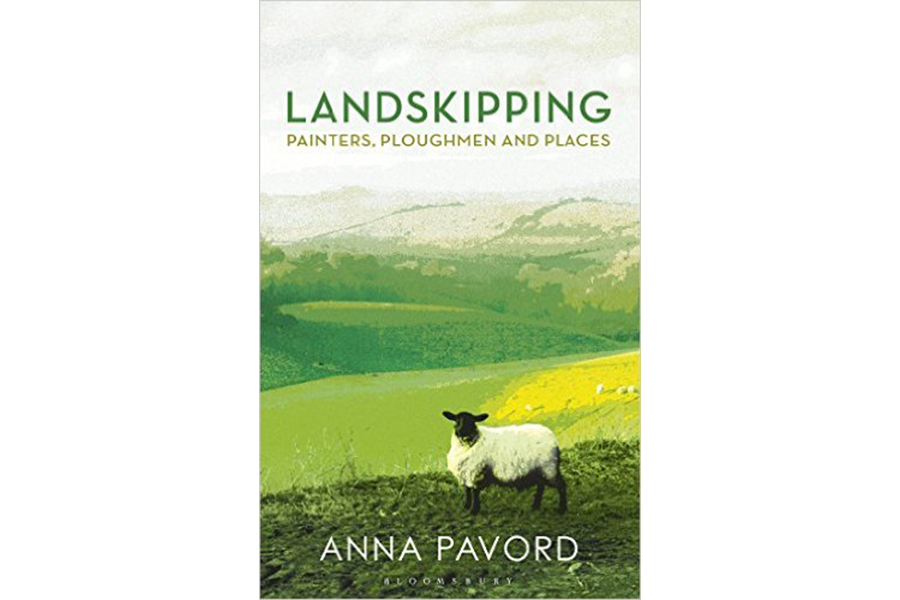'Landskipping' movingly considers the human love of landscapes
Loading...
On my worktable are two photographs; one of the Dargle River on Ireland’s east coast, where I grew up, the other of nearby Killiney Beach, where my mother spent her youth. Both scenes are empty of people but filled with ghosts. When I look at them, I can feel the riverbank spongy under my sandals and hear the shush of waves collapsing on shingle, churning the pebbles. Every detail is imprinted for life because this is my native place.
Anna Pavord knows the feeling. The Welsh-born writer had a similarly quiet start and she begins her new book, Landskipping: Painters, Ploughmen and Places, with a bucolic memory: gathering winberries with her mother on gentle slopes.
“At the top of all three of the hills, the land flattened out and wide grass paths, kept open by the endless nibbling of sheep, led forward to the smooth cone of the mountain.... Not sublime. Not even as beautiful as other places I discovered later in life. But resilient. And deeply familiar.” Pavord’s North Wales is not “a landscape to be given a capital L” like Snowdonia or the Lake District, and her wonderful book – as deceptively modest as the hillside just described – reveals why that is; how ideals of beauty were imposed on nature, most assiduously in the 18th century and most ecstatically in the Romantic era.
"Landskipping," a title taken from the 17th-century word landskip, which derived from the Dutch landschap, covers a lot of ground historically and geographically. Journeying from prehistoric Stonehenge to the present, Pavord alights in the Scottish Highlands, the Lake District, Norfolk, Northumberland, Wales, and Dorset.
As she vividly describes each region, she also introduces us to 18th-century travel writers like the nitpicking William Gilpin and 19th-century agricultural reformers such as the fulminating William Cobbett. She calls on painters and poets: Constable, Turner, Wordsworth, John Clare.
Yet Pavord never seems hurried or, worse, plodding. An ideal travel companion, she dispenses her erudition deftly and engagingly, varying her pace and point of view with such agility that the land she surveys and the history she contemplates become equally tangible. Trudging across marshland, for example, she observes that “Until about 7000 BC, Norfolk was joined to mainland Europe by a North Sea landscape of forests, swamp and brackish pools ... you could make out the shape of roots and whole trees, lying where they had fallen, pickled now to a crumbly softness.” She passes cottages built of ” ... melting blocks of chalk” and retreats to a pub decorated with "the carefully stage-managed remnants of a civilization now vanished: walls hung with reed cutters, rick knives, spokeshaves.” Then out again into the rain. Would a visit to the harbor town of Wells be fun? “It might be, but not on the wet Sunday afternoon I was there, when only amusement arcades leered out of the greyness.”
There are echoes of Robert Louis Stevenson in the book’s companionably irreverent tone and of Laurie Lee in its lyricism, but Pavord’s own voice, direct and witty, is strongest of all. Lamenting the blurring speed of modern travel, for example, she writes, “I always salute Stonehenge when I pass it. Yet I feel bad storming down the A303 with Eric Clapton pounding on the car’s tape deck and a half-eaten Mars bar in my hand. It seems disrespectful to flash by like this.”
Then she allows us a glimpse of the site as Turner painted it in the 19th century, “the enigmatic stones standing in silhouette on the horizon beyond.” Pavord loves this varied land – her childhood Wales, her Dorset fields – but with clear-eyed passion. “It is a fallacy that our landscape is an entirely natural phenomenon,” she explains in her chapter on agriculture, “the views that we croon over and write about, with too many adjectives, have very often been shaped by farmers.”
No wonder she has a soft spot for agriculturalist William Cobbett, whose zealotry is one of this book’s delights. “To travel in stage coaches is to be hurried along by force, in a box, with an air-hole in it,” he huffed as he traveled on horseback in the 1820s, visiting farmers, extoling the swede, hating the potato, and skewering big landowners. (“The great, the big bull frog grasps all,” Cobbett wrote in 1823. “In this beautiful island every inch of land is appropriated by the rich.”) And the new suburbs? Pavord writes that “Sunninghill made him so apoplectic you wonder he could stay in the saddle: ‘a spot,’ he raged, ‘all made into grounds and gardens by tax eaters.’ ” (Imagine Cobbett’s delight when Pavord later remarks, “As an environment, a golf course is a fascist state.”)
Equally charming are crotchety tourists like John Byng, who visited Tintern in 1781and wrote that he “entr’d the abbey accompanied by a boy who knew nothing, and by a very old man who had forgotten everything; but I kept him with me, as his venerable grey beard, and locks, added dignity to my thoughts.”
The history of tourism, of landscape painting, of revolutions in taste; the fact that Constable, when painting on rough sheets, “put wings” on any specks in the paper and made them “fly away as birds”; the thrilling description of a Lake District waterfall when “the whole leisurely bulk of the river is penned between jutting cliffs of rock on either side, wet with spray, green with moss:” Pavord folds all of this and more into a graceful, airy narrative that ends where it began, on a Welsh mountainside and with a final gesture. “I cast my mother’s ashes into the wind,” she concludes, “and waited silently as they whirled out over the glittering valley.”






